Views: 405
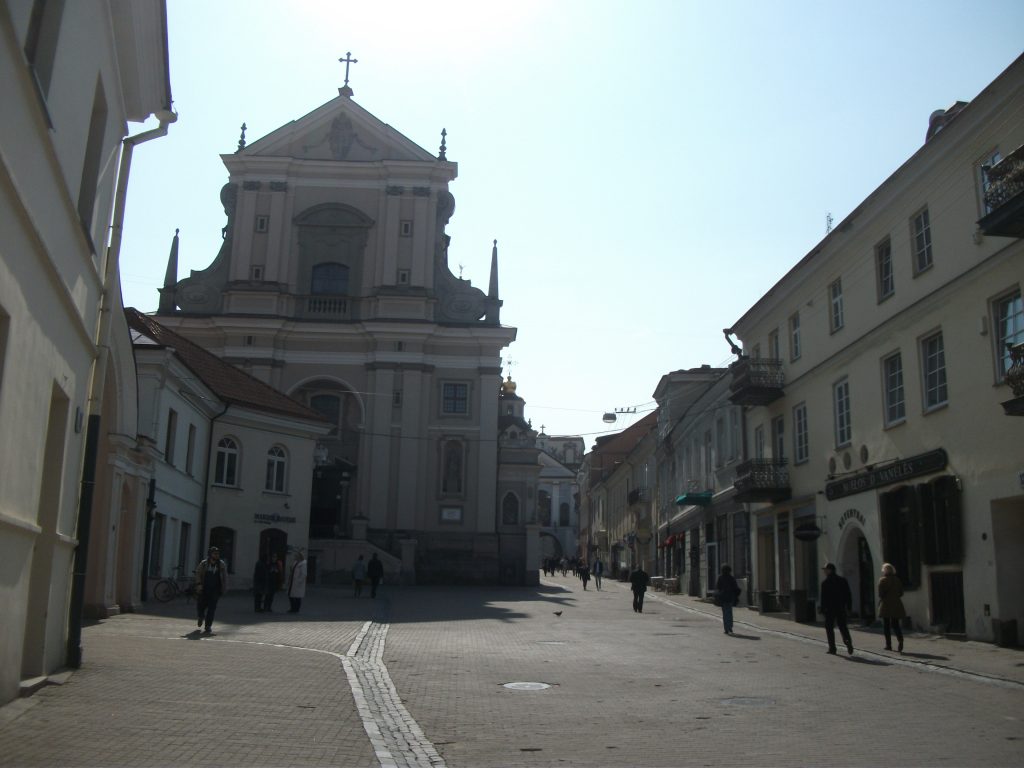
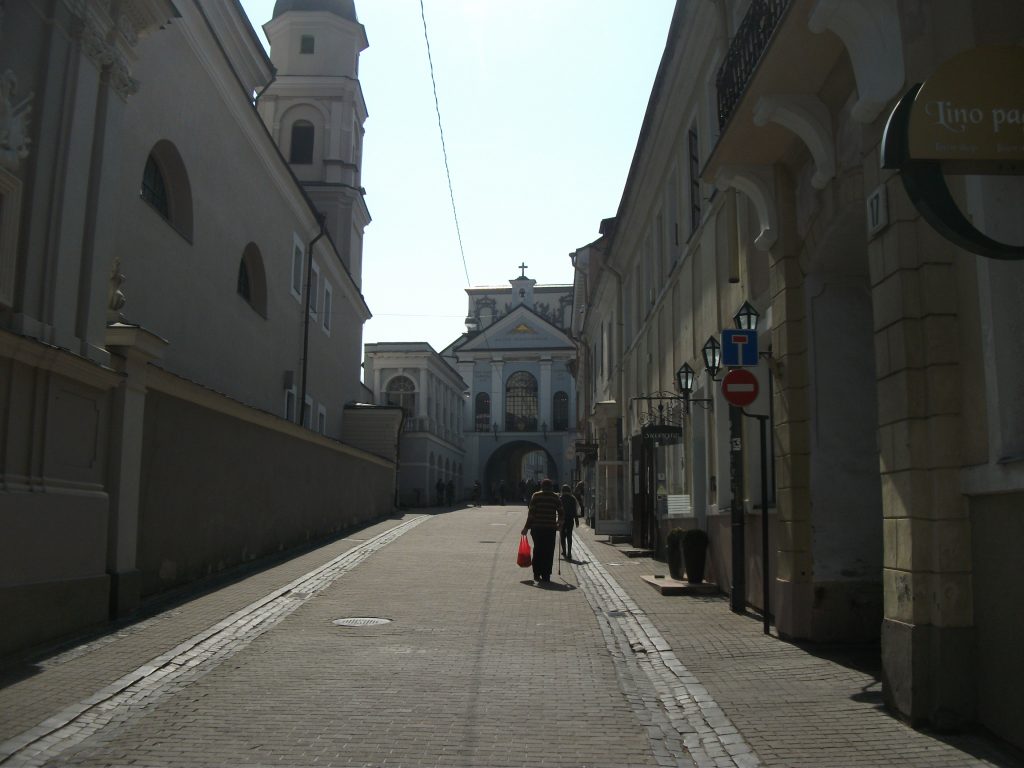
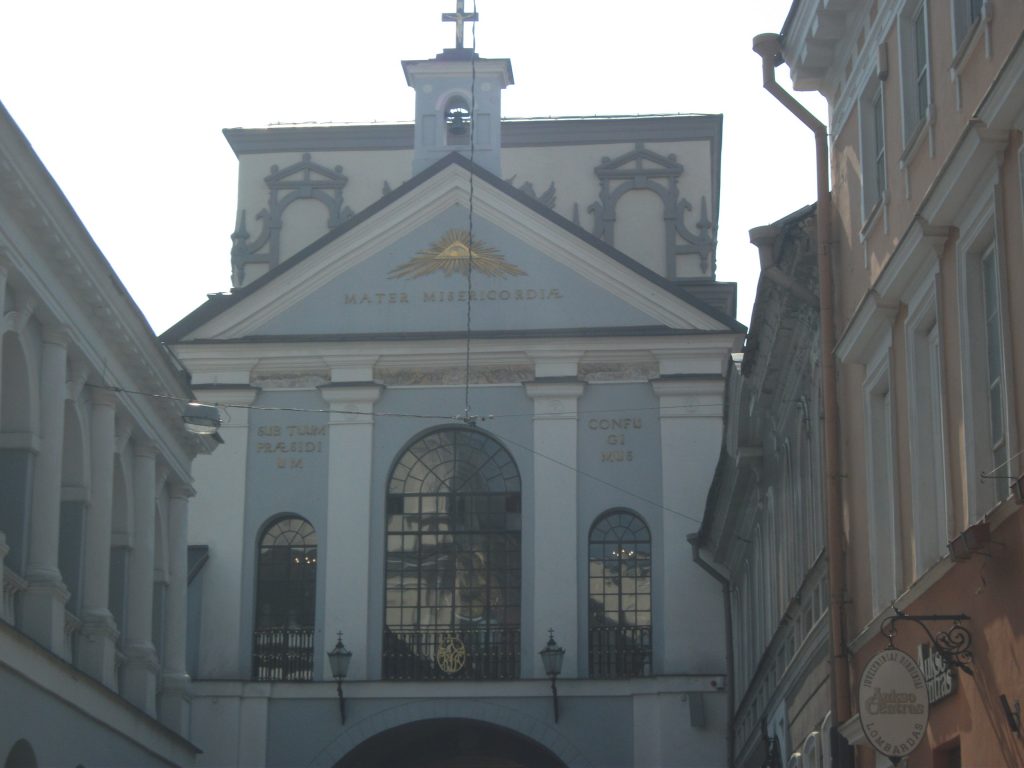
All photos are copyrighted by Vladislav B. Sotirovic
© Vladislav B. Sotirovic 2018

RELATED POSTS
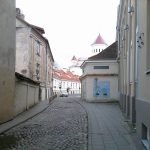
The Grand Duke of Lithuania Sigismund (1432-1440), who ruled briefly after the death of his brother Vytautas the Great (died in 1430), granted equal rights to the Russian Orthodox believers living in the capital-city of Vilnius - before long they came to constitute one half of the members of the city board and guild elders In the Middle Ages Vilnius (today Old Town) was increasingly multy-national as it was the case with the Grand Duchy of Lithuania as well. The city was, in fact, divided into four quarters according to the ethnic and religious belonging of its citizens: the German Quarter, the Russian Quarter, the Jewish Quarter, and the Tartar Quarter. Each of these city quarters had the main street named according to the ethnic belonging of their inhabitantsThe Russian Street in Old Town of Vilnius ends with the Russian Orthodox Cathedral (Sobor) of the Dormition of the Holy Mother ...
Continue Reading
A building of Jewish Center of Culture and Information in the area of the Large Jewish Ghetto in 1941-1943. In this house a famous Vilnius resident Dr. Tzemach Shabad livedTzemach Shabad (1864-1935) was not only a good doctor, but a societal and community figure, and humanist as well. A monument (in 2007 erected) to him on the territory of WWII Large Jewish GhettoA plaque of a plan of the Jewish Ghetto in 1941-1943. There were Small and Large Jewish Ghettos existing from September 6th, 1941 to September 23rd, 1943. Today, September 23rd is the National Memorial Day for the Holocaust/Genocide of the Lithuanian Jews All photos are copyrighted by Vladislav B. Sotirovic© Vladislav B. Sotirovic 2019
Continue Reading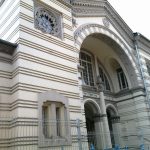
Choral Synagogue is the place of the only working synagogue and school "Tarahat Hakodesh" in Vilnius This synagogue is built in the Oriental Moorish style and is only survived one out of some 105 before WWII synagogues and other Judaic prayer housesThe exterior contains an inscription in Hebrew "A prayer house is sacred for all nations", and above the pediment the tablets with the Ten Divine Commandments are representedAll photos are copyrighted by Vladislav B. Sotirovic© Vladislav B. Sotirovic 2020
Continue Reading
The church is an elegant late Baroque monument built-in 1702-1730. It is made even more attractive by an asymmetrical monastery ensemble in 1713-1730The towers date from the mid-18th century. They end in rococo domes with lanterns Both the church and the monastery belonged to the Jesuit Order. The monastery was intended for the Jesuit monks with 10 years of service experience seeking to become professed Jesiuts, i.e., to make the last ceremonial vowes All photos are copyrighted by Vladislav B. Sotirovic© Vladislav B. Sotirovic 2019
Continue Reading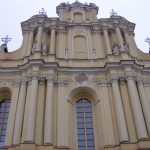
The church received its current form in 1738-1749 after fires in the cityThe church was rebuilted by Vilnius Baroque architect J. K. Glaubitz in the ornate Late Baroque style, and installed 24 altars insite The church bell tower received its current shape in 1737. The bell tower is 68 m tall. It is the tallest building in Vilnius Old TownAll photos are copyrighted by Vladislav B. Sotirovic© Vladislav B. Sotirovic 2018
Continue Reading
Universiteto St. 3 - The oldest building of Vilnius University with Gothic elements stands there dating from early 16th centuryThe Brzostowski estate. In 1667-69, a plot of land with buildings was bought by a diplomat, later the Trakai voivode Cyprian Pawel Brzostowski. The exterior and interior of the palace was decorated by architect Martin Knackfuss in 1769Alumni house. It was the Ecclesiastical Seminary founded by Pope Gregory XII in 1582. A three-storey palace with arccades was built in 1622All photos are copyrighted by Vladislav B. Sotirovic© Vladislav B. Sotirovic 2020
Continue Reading
In 1780, Vilnius Bishop Ignacy Massalski settled in Verkiai. He commissioned Lithuanian architect Laurynas Gucevičius to reconstruct an earlier palace. The general plan and maintenance buildings were designed by Lithuanian architect Martin KnackfussThe ensemble encompasses the park of 36 ha. Situated on two terraces, the park consisted of two parts - the upper and the great park. A view of Vilnius and the Neris River is exposed from a steep slopeSince 1960 the ensemble belongs to the Lithuanian Academy of Science and is gradually renovatedAll photos are copyrighted by Vladislav B. Sotirovic© Vladislav B. Sotirovic 2021
Continue Reading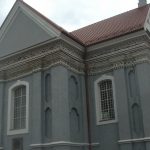
St. Lazarus' almshouse operated in this church, plague and famine victims were buried there. In 1715, the church and the monastery were given to the brethren of St. Rochus who tended to sick people, and in 1752 - to the sisters of MaryIn a cemetery at the church many outstanding people were buried, among others architect Laurynas Stuoka-Gucevičius. A memorial plaque to him is set up on the south façade of the church. However, later the cemetery was turned into a storage site of construction materialsThe church was severely damaged during a fire in 1794. The church was reconstructed and slightly transformed in 1801-1806. In 1864, the convent was closed down, and the buildings converted into a prisonAll photos are copyrighted by Vladislav B. Sotirovic© Vladislav B. Sotirovic 2020
Continue Reading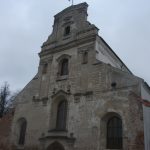
The church is Gothic, with some Baroque forms that it acquired in the late 18th centuryIn 1812 the church was partly destroyed by the French army that used it as a granary. Since 1864 the church was closed and converted into an archive The church adjoins a monastery, the oldest in Lithuania, whose construction began in Gediminas' times (in 1334)All photos are copyrighted by Vladislav B. Sotirovic© Vladislav B. Sotirovic 2018
Continue Reading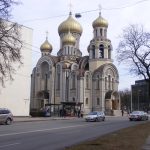
It is one of the most attractive Russian Orthodox churches in Vilnius: the exterior is a profusion of shining onion-shape domes; but the interior is remarkably serene. The interior's simplicity is interupted only by an elaborate iconostasis The internal space is created by two huge pairs of parallel semi-circular arches, intersecting at the top under the central dome which is also the main source of lightA panel on the right of the iconostatis depicts the two saints, both from noble families in the Middle Ages, to whom the church is dedicatedAll photos are copyrighted by Vladislav B. Sotirovic© Vladislav B. Sotirovic 2020
Continue Reading
Of the two wings, only the east one is open to the public. It is used as a venue for art-exhibitions, usually for work by contemporary artistsThe east wing was given a tower in the mid-19th century. As viewing a show, visitors can admire its lavishly decorated rooms, with their elaborate woodwork and intricately painted walls and ceilingsThe most magnificent building is the eastern maintenance building, in which the interiors of the second half of the 18th century have been restoredAll photos are copyrighted by Vladislav B. Sotirovic© Vladislav B. Sotirovic 2021
Continue Reading
Martynas Mažvydas National Library of Lithuania is a national cultural institution open to all users, active in the areas of dissemination of information, culture, science, and education, performing library activities and ensuring implementation of the national information policy falling within its competence The mission of the library is to be the Lithuanian space of knowledge-creating value for the public The vision of the library: to become an integral part of the state's information policy, culture, education, science, and economic progressAll photos are copyrighted by Vladislav B. Sotirovic© Vladislav B. Sotirovic 2019
Continue Reading
The Town Hall hosted a court, archive, weapons depository, as well as a prison for artisans that had broken the law. Burgomasters also held meetings in the Town Hall, as did the Council of Merchants Since 1991, Vilnius Old Town Hall once again is functioning as a place for holding important events like art exhibitions, concerts, conferences, meetings, etcIn the Middle Ages, the Town Hall Square was a place where physical punishment was carried out. There were gallows and a scaffold nearby, where executions were carried outAll photos are copyrighted by Vladislav B. Sotirovic© Vladislav B. Sotirovic 2019
Continue Reading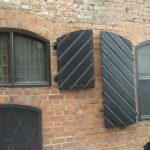
End of Stiklų St. on the intersection with Dominikonų St. and Šv. Ignoto St. in the Old Town in VilniusIn Stiklų St. No. 4 stands a typical building with a so-called Courtyard of the Printing House. Its history goes back to the 15th century. In the 16th century it held the Mamonichi printing house. A Gothic building in the courtyard with the exterior and fragments of the interior was reconstructed in 1974. In front of it a sculpture of "The Chronicler" is erected in 1973Wall (right) of the former Russian Orthodox church in Stiklų St. No. 17All photos are copyrighted by Vladislav B. Sotirovic© Vladislav B. Sotirovic 2020
Continue Reading
One of the Latin inscriptions: "This house is that of Urania: be gone profane worries! Here the humble Earth is scorned: from here one rises to the stars"Here it was a Jesuit pharmacy. Medical herbs were grown in the courtyardThe buildings of the Observatory Courtyard are the oldest in the university ensembleAll photos are copyrighted by Vladislav B. Sotirovic© Vladislav B. Sotirovic 2018
Continue Reading
Town Hall Square has been a market place since very early times, and it today dominated by the Town Hall which was formerly a court, with the basement being used as prison cellsThe Town Hall back-side. The present building was constructed between 1785 and 1799 by the Classical architect Lithuanian Laurynas Stuoka-Gucevičius The square in front of the Town Hall is the venue for an annual three-day crafts market on the weekend closest to March 4th, St. Casimir's DayAll photos are copyrighted by Vladislav B. Sotirovic© Vladislav B. Sotirovic 2020
Continue Reading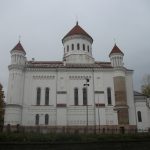
The church is endowed by Juliana, the wife of Lithuania's Grand Duke Algirdas (1345-1377) and mother of Lithuania's and Poland's ruler Jogaila. Grand Duke of Lithuania Jogaila baptized Lithuania in 1387. She was buried in the churchFragments of Gothic masonry have survived in the bottom part and in some segments up to the top. The present façades and the cupola imitate Georgian medieval architectureIn 1415 the church was transformed into a cathedral. In 1511-1522 it was reconstructed by Prince Constantine Ostrogsky. In 1516 Helen (a Russian Orthodox), wife of Alexander Jagiellon (Polish King and Lithuanian Grand Duke) was buried there. In 1609 the cathedral was given to the Uniates (Greek Catholics). In 1865-1868 it rendered its present appearance, and it began to function as a church again All photos are copyrighted by Vladislav B. Sotirovic© Vladislav B. Sotirovic 2018
Continue Reading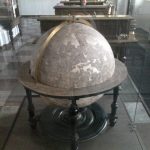
Vilnius University was the first observatory center in Eastern Europe and the 4th in the worldWhite Hall now houses unique astronomical instruments and a reading roomThe narrow staircase leads to the observatory tower, which reveals a panorama of the Vilnius Old TownAll photos are copyrighted by Vladislav B. Sotirovic© Vladislav B. Sotirovic 2023
Continue Reading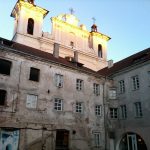
In Old Town in Vilnius, at the Church of the Holy Spirit, on St. Ignatius St., a Dominican monastery was established in 1501At the time of Napoleonic Wars (in 1812) the Dominican monastery of the Church of the Holy Spirit was used by the French army as a hospitalThe monastery was converted into a prison by the Russian authorities in 1807. Corridors are decorated by frescoes from the 18th centuryAll photos are copyrighted by Vladislav B. Sotirovic© Vladislav B. Sotirovic 2021
Continue Reading
This is the first Evangelical Lutheran Church (Kirche) built-in Vilnius in 1555 on the initiative of the Chancellor of the Grand Duchy of Lithuania Nicholas Radziwiłł the Black. In front of the church, there is a monument erected to Martin Luther The church was rebuilt in 1662 and substantially reconstructed in 1738-1744. In 1944 it was closed down. In 1993 it was returned to the parishioners and renovatedThe church has a single nave and an original pentagonal shape. Its magnificent high altar was designed by German Protestant architect Jan (Johan) Krzysztof GlaubitzAll photos are copyrighted by Vladislav B. Sotirovic© Vladislav B. Sotirovic 2019
Continue ReadingThe Russian Street in Vilnius
Jewish Quarter (I)
Choral Synagogue in Vilnius
Church of St. Archangel Raphael
St. Johns’ Church
University Street in Vilnius
The Ensemble of the Verkiai Estate
Church of St. Stephen
Church of the Assumption of the Holy Virgin Mary and the Franciscan Monastery
The Russian Orthodox Church of St. Michael and St. Constantine
The Verkiai Palace
National Martynas Mažvydas Library
Vilnius Old Town Hall
Stiklų St. in the Old Town in Vilnius
The Observatory Courtyard of the Vilnius University
Around Town Hall Square in Vilnius
Russian Orthodox Church of the Blessed Mother of God
Astronomic Instruments at the White Hall at Vilnius University
A Dominican Monastery at the Church of the Holy Spirit
Evangelical Lutheran Church


